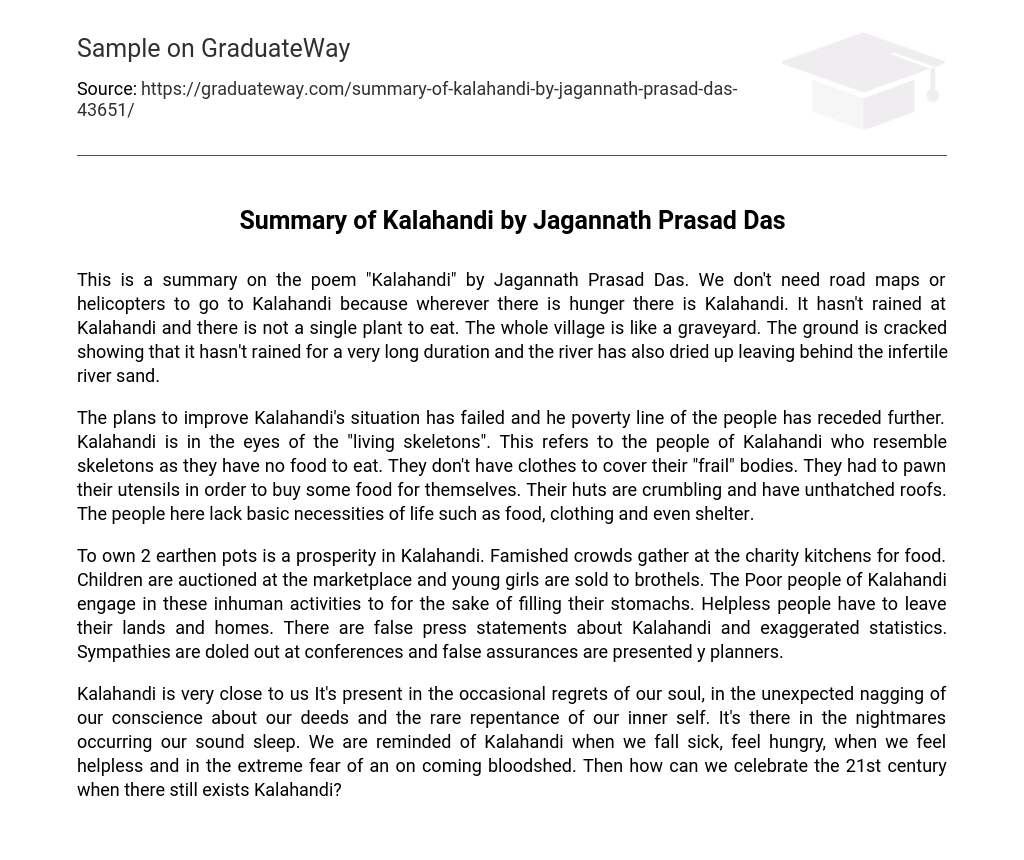This is a summary on the poem “Kalahandi” by Jagannath Prasad Das. We don’t need road maps or helicopters to go to Kalahandi because wherever there is hunger there is Kalahandi. It hasn’t rained at Kalahandi and there is not a single plant to eat. The whole village is like a graveyard. The ground is cracked showing that it hasn’t rained for a very long duration and the river has also dried up leaving behind the infertile river sand.
The plans to improve Kalahandi’s situation has failed and he poverty line of the people has receded further. Kalahandi is in the eyes of the “living skeletons”. This refers to the people of Kalahandi who resemble skeletons as they have no food to eat. They don’t have clothes to cover their “frail” bodies. They had to pawn their utensils in order to buy some food for themselves. Their huts are crumbling and have unthatched roofs. The people here lack basic necessities of life such as food, clothing and even shelter.
To own 2 earthen pots is a prosperity in Kalahandi. Famished crowds gather at the charity kitchens for food. Children are auctioned at the marketplace and young girls are sold to brothels. The Poor people of Kalahandi engage in these inhuman activities to for the sake of filling their stomachs. Helpless people have to leave their lands and homes. There are false press statements about Kalahandi and exaggerated statistics. Sympathies are doled out at conferences and false assurances are presented y planners.
Kalahandi is very close to us It’s present in the occasional regrets of our soul, in the unexpected nagging of our conscience about our deeds and the rare repentance of our inner self. It’s there in the nightmares occurring our sound sleep. We are reminded of Kalahandi when we fall sick, feel hungry, when we feel helpless and in the extreme fear of an on coming bloodshed. Then how can we celebrate the 21st century when there still exists Kalahandi?





